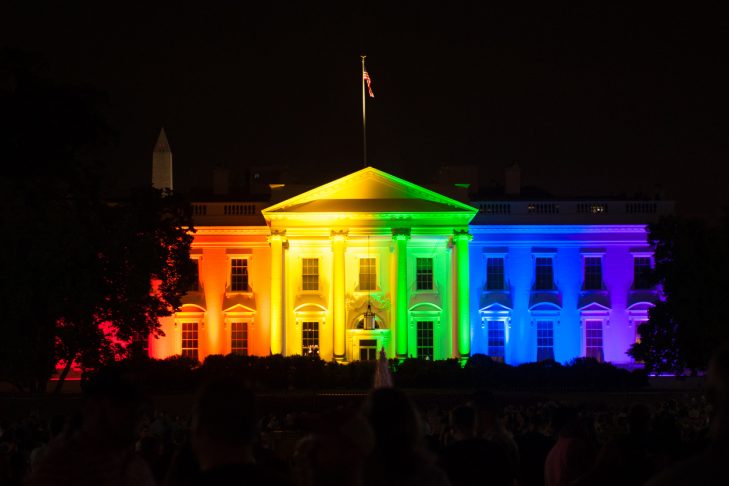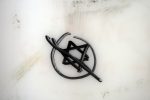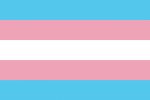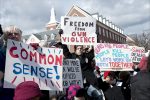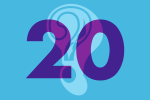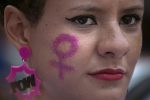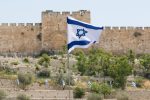Why is LGBTQ liberation a part of our Passover story, tonight?
Every year on Passover, we explore the meaning of mitzrayim, meaning “narrow place,” and are asked to consider in what ways we may find ourselves in mitzrayim in our own lives, and in the world today. Though LGBTQ rights have made significant progress in the U.S. and around the world in the last decade, LGBTQ people still experience oppression and marginalization, homophobia and transphobia still plague our world, and LGBTQ people are in many ways still living in mitzrayim. So tonight, as we consider how our liberation story is tied to ongoing struggles for justice and freedom, we ask four questions about LGBTQ liberation.
What does LGBTQ mean, and why do the letters seem to keep changing?
LGBTQ stands for Lesbian, Gay, Bisexual, Transgender and Queer or Questioning, and the acronym is often used as a shorthand to describe diverse people who fall under an umbrella of marginalized sexualities and gender identities. Language in the LGBTQ community is dynamic and evolving. As people whose lives have, for centuries, been left out of the narratives of history and defined in other people’s terms, LGBTQ people know that words have power. LGBTQ communities developed coded language to find one another, and now have both the challenge and opportunity of describing ourselves and our lives in our own words. The terms—and the abbreviation—change as the community collectively strives to better describe all within it, in all their vibrant diversity, and as those who have gone unacknowledged demand a name come into being.
Question for the table: What words do you use to describe yourself? How have these words shaped your sense of self and your ability to be recognized for who you truly are?
Why is LGBTQ justice and liberation a Jewish issue?
Judaism teaches us that all people are imbued with holiness, created b’tzelem Elohim—in the image of God—and that we have an obligation, as Jews, to uphold human dignity (kavod habriyot). We are taught in the Babylonian Talmud: “So great is human dignity that it supersedes a negative commandment in the Torah” (Brakhot 19b). In the world today, LGBTQ people face barriers and attacks on their lives, safety and dignity. When 90 percent of LGBTQ children report bullying and harassment in their schools, when LGBTQ people can be fired from their jobs for being who they are, when transgender people are four times more likely to live in extreme poverty, and when over 40 percent of transgender people attempt suicide, we have an obligation to act to ensure the safety and dignity of LGBTQ people. This oppression facing LGBTQ people is one version of a contemporary mitzrayim—narrow place—from which we seek to emerge into liberation during Passover.
Question for the table: How do your Jewish values compel you to take action for LGBTQ liberation?
What does it mean to be an ally?
Being an ally means taking action, in words and deeds, on behalf of another group of people who are facing oppression. According to one midrash (ancient Torah commentary), the midwives who disobeyed Pharaoh’s orders to kill the Israelite babies, Shifra and Puah, were actually Egyptian, and were acting as allies. They took a risk and put themselves on the line to help protect the Israelites, who were being oppressed by Pharaoh. Eventually Shifra and Puah, according to this midrash, converted and joined the Israelites. Being an ally to LGBTQ people means speaking out and standing up in support of the rights, dignity, safety and well-being of LGBTQ people, even if those issues don’t impact you directly.
Question for the table: Do you have examples from your own life of a time you have stood up for someone else as an ally, or when someone else has stood up for you? How have these shaped your thinking about being an ally to others?
How can we support LGBTQ people in our Jewish community?
There are so many places to start! Here are just a few ideas:
- Encourage your community to recognize and observe LGBTQ holidays as part of the Jewish year. Plan a Pride Shabbat, say a blessing for coming out on National Coming Out Day, and mark Transgender Day of Remembrance by reading the names of transgender people lost to transphobic violence and saying the Mourner’s Kaddish (the prayer traditionally recited in memory of the dead).
- Designate all-gender bathrooms in your community, and ensure that gendered bathrooms are accessible to people who identify with the designated gender. Bathroom access is a critical issue for transgender people, who face harassment, violence and gender policing in public bathrooms. Making sure that everyone in your community can use the restroom in comfort is an important baseline for creating a trans-inclusive community.
- Explore and create Jewish ritual to mark LGBTQ lifecycle events. Beautiful rituals have been created to commemorate coming out, gender transition, name changes, gender neutral coming-of age (simchat mitzvah), and other lifecycle moments. Encourage your clergy to familiarize themselves with these rituals, and make sure they make it publicly known that these rituals are available.
- Say it out loud! LGBTQ people cannot assume that Jewish spaces will be welcoming to them, so many people look for subtle markers of inclusivity. An explicit statement of inclusion on your website, an LGBTQ Safe Zone sticker (available for purchase and download from Keshet), and images of LGBTQ people and families on your brochures and websites can help communicate that LGBTQ people belong.
Question for the table: How else can you support LGBTQ people in your communities and around the world?
This post has been contributed by a third party. The opinions, facts and any media content are presented solely by the author, and JewishBoston assumes no responsibility for them. Want to add your voice to the conversation? Publish your own post here. MORE


